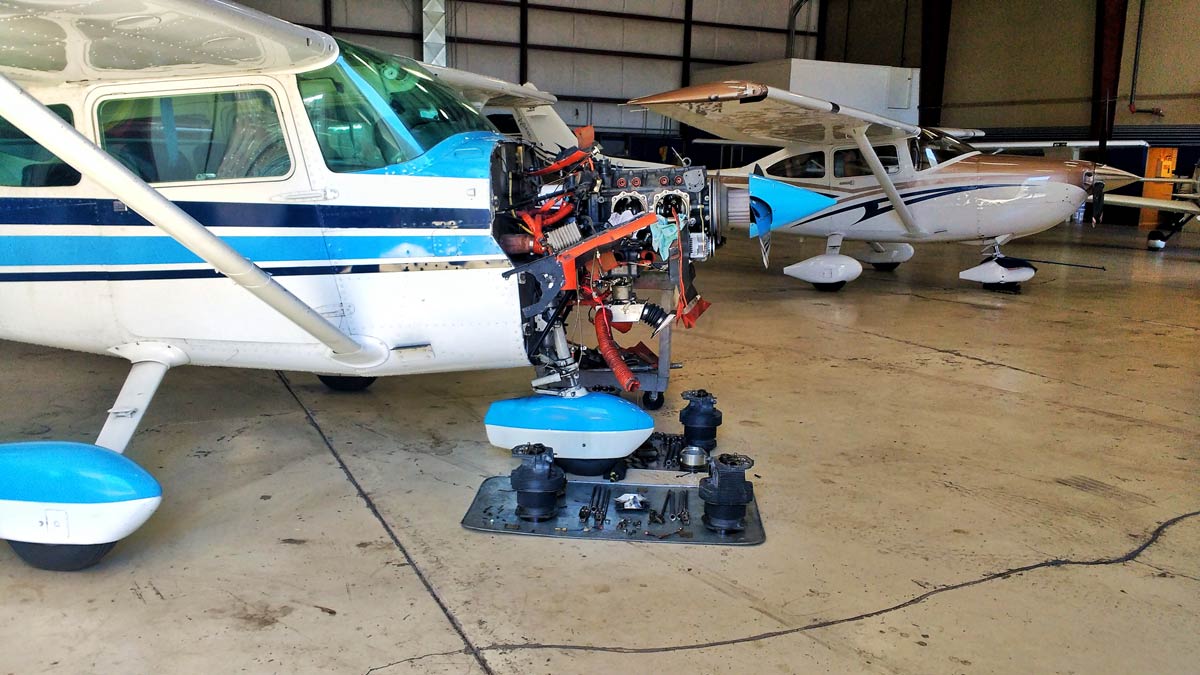Pilots should be aware of the symptoms of DVT and flying.
In addition to being a regular contributor to Disciples of Flight, I have been privileged to write and/or edit for a number of print publications, including the aviation travel magazine Pilot Getaways, where I serve as Managing Editor. As you may know by now, in the early morning hours of July 13, 2015, my immediate boss and friend, Pilot Getaways co-founder and Editor-in-Chief John T. Kounis, passed away unexpectedly at the age of 51. The legacy John left, and wanted to leave, was to inspire pilots and their families to use their airplanes as magic carpets, to take them to new places, rather than just the same old “$100 hamburger.” Flying somewhere new challenges your piloting skills and offers you the opportunity to see America’s beauty, learn about our diverse history, and experience new cultures, cuisines, and climates.
For his entire flying career, which began at age 18, John embraced this spirit of adventure. He flew to nearly every U.S. state, Mexico and the Caribbean, and across Europe, Africa, and the Middle East. He crossed the Atlantic Ocean as co-pilot of a Kodiak Quest. One of his biggest dreams was to cross the Pacific Ocean, a real challenge in a single-engine airplane. His chance to fulfill that goal came when a friend who lives in Malaysia indicated an interest in buying a Cessna 185 in the U.S. and ferrying it across the Pacific. John enthusiastically began searching for the perfect Skywagon, located one, and then spent months updating and fine-tuning the airplane, as well as having it equipped with long-range ferry tanks. In order to have a generous fuel reserve for the longest legs (about 17 hours each), John needed to ferry the airplane alone. To ensure that both the aircraft and pilot were up to such a task, John actually made a non-stop 11-hour flight up and down the California coast. He wanted to make sure he left no stone unturned in his preparation.
In late May, he departed Monterey, Calif., and flew his first leg to Hawaii. We followed his progress via his DeLorme satellite tracker. At one point I texted him to see how he was doing. “It’s pretty lonely up here,” he replied. But he made it. From there he flew across tiny Pacific islands, arrived safely in Malaysia, and enjoyed a few weeks of flying around the area with his friend in the Skywagon. Then he took an airliner home, his dream fulfilled.
About two weeks after his return, he developed a sudden, sharp pain just below his right shoulder blade. He went to see a doctor about the pain in his back, and was sent home with antibiotics to treat “mild pneumonia.” Two nights later he collapsed at home and was revived by his brother, who took him to the emergency room, where he subsequently collapsed again and could not be revived. Autopsy results showed deep vein thrombosis (DVT) behind one knee and a blood clot on one lung, but the critical problem was a saddle pulmonary embolism, a blood clot that stopped blood flow to the lungs. And this leads me to what I hope can be John’s other legacy: making sure this never happens to you.
DVT and Flying Is Only Once Concern
DVT is when a blood clot forms in the lower limbs and a fragment breaks loose and moves to the lungs, where it can block a pulmonary artery and potentially be fatal. More than 2 million Americans develop a clot each year, and 600,000 develop the condition where the clot moves to the lungs. About 300,000 Americans die every year of a pulmonary embolism caused by DVT. The condition was first brought to major public notice after popular NBC field reporter David Bloom, 39, died this way while covering the invasion of Iraq in April of 2003. He told his wife, “This is the story of my lifetime.” It turned out that was true, but not in the way he expected. “Embedded” with U.S. troops, Bloom squatted inside a tank for a number of hours. After his death, his widow Melanie Bloom became the spokesperson for The Coalition to Prevent DVT, reminding Americans that DVT kills more people than AIDS and breast cancer combined.
You don’t need to sit in a tank or a small airplane for 17 hours to develop DVT. Anytime you sit for long periods you increase your risk. Fortunately, the solution is usually simple: get up and walk around periodically when working at your desk. On an airline flight, get up and walk the aisle at least once every two or three hours. The Aerospace Medical Association also recommends that you exercise your legs by flexing and extending your ankles, even when seated. On a road trip, pull over, get out, and stretch your legs. If you fly a small airplane, particularly without a co-pilot or autopilot, it can be more problematic. But in nearly every case, if you have a long flight, you should be able to move around some. I spoke with a female pilot who has ferried about two dozen small aircraft across the Pacific, usually alone and often without an autopilot. She moves around in her seat, does exercises including toe curls and presses, and stretches her legs alternately. Being small and lean helps her move in a tight cockpit.
DVT And Flying – Prevention
How can you prevent DVT? Get annual checkups, alert your doctor if you have a family history of blood clots, and know that heart or lung disease, as well as some cancer treatments, can increase your risk. High blood pressure and smoking both significantly elevate your risk. Move around as soon as possible after illness, injury, or surgery. Maintain an active lifestyle and avoid obesity: extra pounds put pressure on the veins in the pelvis and legs. Compression stockings, which look like long socks, can be helpful on long trips. The pressure helps push blood back to the heart instead of pooling in the legs. One study showed the socks significantly cut the “DVT and flying” risk factors on long flights. Talk to your doctor first so you get the right size; some diabetics may not be able to tolerate them.
Be aware of the symptoms of DVT and flying: most commonly swelling, pain, or unusual redness in one leg, but can also be in the ankle, foot, arm, or neck. See a doctor if you’re concerned, and if you’re not satisfied with what you’re told, see another doctor or be more assertive with your own health care. Chest pain (anywhere in the chest cavity, front or back), shortness of breath, dizziness, or coughing up blood call for immediate medical attention.
ADDITIONAL READING: Aviation Medicine – Surprising Long-Term Health Risks to Pilots
















Leave a Reply